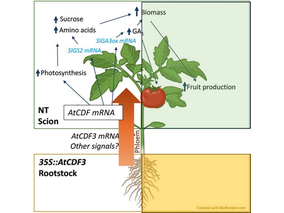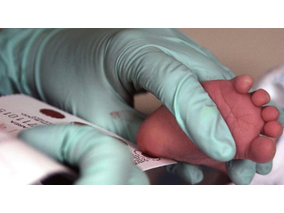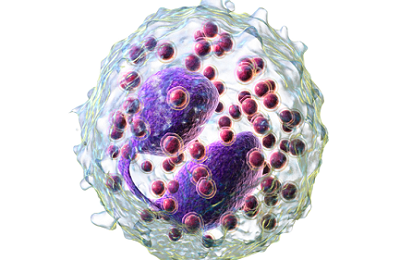Bioelectronics is moving towards the design of electronic platforms at the nanoscale, which allow complex biomolecules to be connected to electronic devices for signal transduction. To do this, the approach must be “bottom-up”: that is, we need to understand the electrical ‘signature’ of the simplest biomolecules to create more complex circuits or understand macromolecular structures.
With this in mind, the group led by IBEC group leader and ICREA research professor Pau Gorostiza developed a nanometric electrical contact based on a single biomolecule, azurin. A single point mutation in this protein promotes an efficient tunnelling effect for the electrons that cross it. “Azurin has a copper atom, and normally, charge transport mediated by this metal happens in two steps per electron,” explains Marta Pozuelo, who recently received her doctorate in Pau’s group and who developed the study. “Instead, taking advantage of a single mutation, we managed to ensure that electronic transport follows a direct tunnel effect.”
The results show that azurin’s electrical conduction pathways can be adjusted very precisely by means of point mutations in the external part of the protein, without affecting its overall structure and function. “We’ve shown a structural mechanism by which the protein could control charge transport in many biologically interesting scenarios,” says Pau.
Their nanometric contact could also provide a unique platform to study the changes in electron transfer related to the structure of various biomolecules similar to azurin.
—
Article citation: Ruiz MP, Aragonès AC, Camarero N, Vilhena JG, Ortega M, Zotti LA, Pérez R, Cuevas JC, Gorostiza P, Díez-Pérez I. (2017). Bioengineering a Single-Protein Junction. J Am Chem Soc. 139(43):15337-15346
Image: Above: Transfer of electrons in azurin without the mutation (left, transport in two steps) and after the point mutation (right, transport by tunnel effect).

The research team observed changes in head circumf...

AtCDF3 gene induced greater production of sugars a...

Un estudio con datos de los últimos 35 años, ind...

En nuestro post hablamos sobre este interesante tipo de célula del...

La revista ‘Nature Protocols’ selecciona esta técnica como “pro...
Biotechnology portal in Spain
Subscribe to our newsletter and stay up to date with the latest news and deals!
2013 © Biotech-Spain.com - Site Developments SL. All Rights Reserved. Terms of Service | Privacy Policy
Articles
Directory
